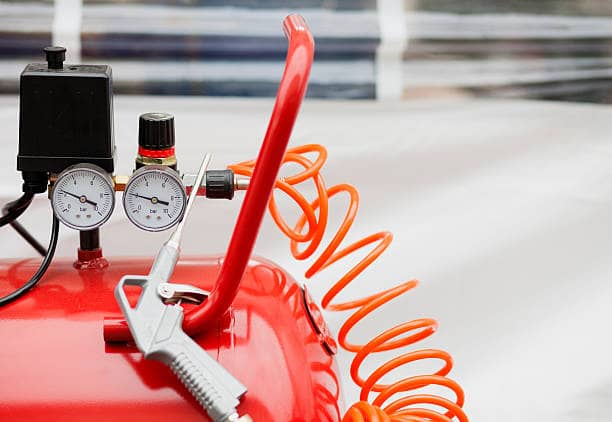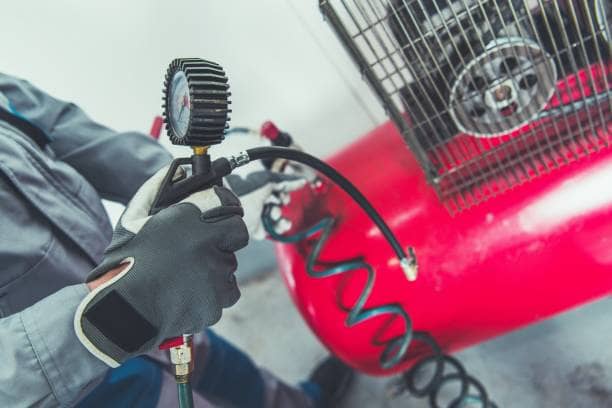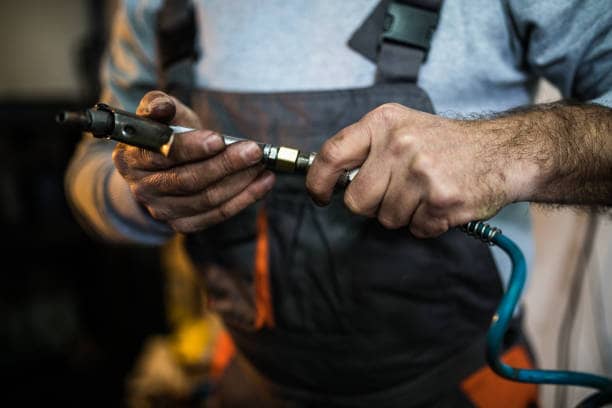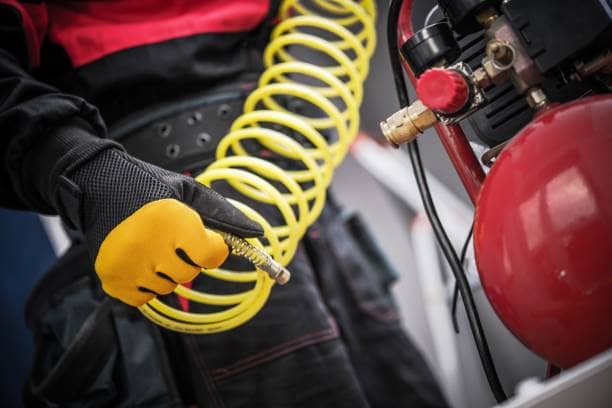Picking the proper air hoses for your industrial compressor system is not simple, even daunting for the inexperienced.
Whether a home or professional air compressor user, you will need a decent air hose to get the most out of your air tools.
There are countless options available in the market, so you need to know how to measure air compressor hose size to choose the one that suits you best.
Let’s read to the end of the article to get valuable information!
How To Measure Air Compressor Hose Size?
Length
Your hoses’ length directly affects the performance and usability of air tools.
Many invest in a hose that is 50 meters long with the expectation of reaching everything they want. It sounds fine, but we don’t recommend it.
Aside from bulkiness and heaviness issues, the longer your hoses are, the more pressure/air from the compressor to your tool will be lost.
So, instead of buying a hose that is too long, you should consider how you will use the air tools and how much movement you need to do your job.
If you need to spray paint cars in your big workshop shop, you will need a longer hose than if you use your tools to create wooden souvenirs on a bench.
The key when choosing hose length is to balance minimal pressure loss and maximum maneuverability.
Also, remember that using a longer hose is always better than an extension lead.
Using an extension lead may cause the air compressor to have voltage dropouts, and you will end up with a burnt-out compressor.
Read more: Air Compressor Won’t Start – Why?
Internal Diameter
Once you have determined the ideal length, it is time to define its I.D (internal diameter). As a rule of thumb, the larger the I.D of hoses, the more air they can carry.
Although external diameter may differ widely depending on their quality and materials, typical internal diameter is 6mm, 8mm, and 10mm in most cases.
The higher the CFM requirement of the air tool requires, the larger the internal diameter should be.
For example, a handheld tool, such as a spray gun or a nailer, usually requires 1 to 3 CFM. In this case, 6mm hoses are the way to go.
On the other hand, for heavy-duty impact wrenches, which tend to require 6 CFM or more, 8mm to 10mm hoses will work well.
For a small handheld tool, where dexterity is needed, choosing a 6mm one is wise.
Other Factors to Consider
Material
The material will affect their performance, weight, flexibility, and longitude. It is crucial to understand the differences in materials to make the right decision.
Polyurethane
- <li “=””Weight: Very light. Easy to transport. Approximately 1/4th the rubber’s weight.br/lili “=””>Cold weather: -5°C approx. Low cold weather performance. <li “=””Price: Impressive value.br/lili “=””>Application: Hard and durable wearing. Useful for any high-pressure application. Not as flexible as PVC or rubber.
Rubber
- Weight: The heaviest kind.
- Flexibility And Durability: Very durable. Lies flat and doesn’t kink. Naturally abrasion resistant.
- Cold weather: -20°C approx. Mediocre performance in cold conditions.
- Price: Very dependable medium-budget hoses.
- Application: Rarely need replacing. Regular to heavy-duty usage. Suitable for agricultural, professional, home, and industrial settings.
PVC
- Weight: Very light. Easy to transport. Approximately 1/4th the rubber’s weight.
- Flexibility And Durability: Tend to kink and coil.
- Cold weather: -30°C approx. Excellent performance.
- Price: Budget champion. Great value.
- Application: Medium duty use. Preferable over rubber in some cases, thanks to the reduced weight.
Standard vs. Recoil: Which One Should You Choose?
A recoil model is similar to a traditional telephone cord which can be released when used and compressed for easy storage.
Meanwhile, a standard model lies flat, and you can store it by mounting it on the hose reel or wrapping it.
Choosing between standard and recoil hoses depends mainly on your application and individual preference.
For example, manufacturing plants often use recoil hoses as they are easy to store and do not take up much space.
Meanwhile, most auto body shops choose standard hoses as the recoil hoses may limit mobility.
When to Replace Your Existing Hoses
You will need to upgrade or replace your current hose one day for a good reason.
If your current hose is faulty or damaged, you will need to replace your hose.
Also, upgrading the hose should be a top priority if you want to use various tools and your current hose is incompatible with this need.
Common defects and damages that require a hose replacement include:
- An irreparable twist or kink.
- Damaged fitting or connector.
- Seepage results from high pressure.
- Premature wear due to exceedingly dry or cold air.
- A puncture or cut in the tubing leads to an air leak.
Finally, even if your hoses have no obvious defects, you will still need to replace them. Industrial hoses typically last from five to ten years.
How long your hose lasts usually depends on many factors, including:
- Material.
- Frequency of use.
- Product quality.
- How do you take care of your hoses?
Consider Determining Fittings
When you buy hoses, you usually get matching fittings in the same package.
But if you have to choose, we recommend choosing high-quality “full flow” fittings that will minimize air losses and suit your application.
The Bottom Line
Through this post, you have learned how to measure compressor hose size to choose the right one for your current compressor.
If you have a query about when and how to replace your hose or which sizing options, style, and material are right for your needs, you can get help from your distributor. Thank you for reading!




